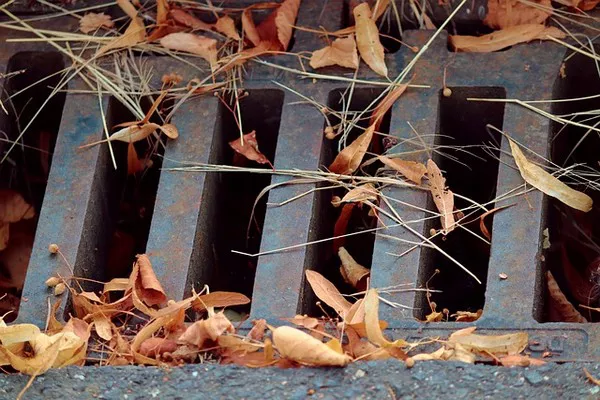Sewage treatment plants are crucial facilities that play a pivotal role in maintaining public health and environmental sustainability. These facilities are designed to process and purify wastewater from residential, commercial, and industrial sources, ultimately releasing clean, treated water back into the environment. In this article, we will explore the inner workings of sewage treatment plants, from the inflow of raw sewage to the release of treated water, shedding light on the intricate processes that make it all possible.
Inflow and Initial Screening
Sewage treatment begins with the collection of wastewater through a vast network of underground pipes, known as sewer lines, which transport the raw sewage from homes, businesses, and industries to the treatment plant. At the treatment plant, the first step is initial screening. Here, large objects such as sticks, leaves, and other debris are removed to prevent damage to equipment downstream.
Primary Treatment
After initial screening, the wastewater enters the primary treatment phase. In this step, large settling tanks allow for the separation of solids from the liquid portion of the sewage. The heavier solids, also known as primary sludge, settle at the bottom of these tanks, while the partially clarified wastewater moves on to the next treatment phase.
Secondary Treatment
The secondary treatment process is designed to further purify the wastewater by removing dissolved and suspended organic matter. The heart of the secondary treatment is a biological process involving the use of microorganisms such as bacteria. These microorganisms consume and break down organic materials present in the sewage. There are two primary methods for conducting secondary treatment:
a. Activated Sludge Process: In this method, the wastewater is mixed with a culture of microorganisms in aeration tanks. Air is pumped into the tanks to provide oxygen, which supports the growth of these microorganisms. As the microorganisms consume organic matter, they form flocs, which can be settled out in a secondary clarifier.
b. Trickling Filters: This method involves passing the wastewater over a bed of rocks or plastic media covered with a biofilm of microorganisms. The microorganisms in the biofilm consume the organic matter in the sewage as it trickles over them.
Tertiary Treatment
While primary and secondary treatments substantially reduce the organic load and solids in sewage, some impurities may still persist. Tertiary treatment is a further step in the sewage treatment process, aimed at removing remaining contaminants and ensuring that the treated water meets strict quality standards. There are several methods for tertiary treatment:
a. Filtration: In this process, the treated water passes through sand or fine mesh filters to remove remaining suspended solids.
b. Chemical Treatment: Coagulants and disinfectants, such as chlorine or ozone, are often added to the treated water to remove remaining impurities and pathogens.
c. UV Disinfection: Ultraviolet (UV) light is used to disinfect the water, effectively killing harmful microorganisms.
d. Nutrient Removal: In some cases, excess nutrients like nitrogen and phosphorus are removed from the water to prevent water pollution and the formation of harmful algal blooms.
Discharge and Environmental Impact
Once the sewage has undergone primary, secondary, and tertiary treatments, the treated water is ready for discharge. It is important to ensure that the effluent meets the strict standards set by environmental regulations to prevent harm to aquatic ecosystems and human health. The treated water is typically released into rivers, lakes, or the ocean, depending on the plant’s location and local regulations.
The release of treated water is just one aspect of the environmental impact of sewage treatment plants. The byproducts of treatment processes, such as primary sludge and excess microorganisms, also require proper management. These byproducts can be treated further, converted into biogas through anaerobic digestion, or disposed of safely to minimize environmental impact.
Sludge Management
The solid residues produced during primary and secondary treatment are collectively referred to as sludge. Proper management of sludge is crucial for environmental and public health. Sludge can be further treated to reduce its volume and make it safer for disposal or reuse. Common methods for sludge management include:
a. Thickening: This process involves the removal of excess water from the sludge to reduce its volume and make it easier to transport.
b. Digestion: Anaerobic digestion is a biological process in which microorganisms break down organic matter in the sludge, producing biogas as a byproduct.
c. Dewatering: The sludge is mechanically treated to remove more water, further reducing its volume.
d. Incineration: In some cases, sludge is incinerated to reduce its volume and generate energy.
e. Land Application: Treated sludge, known as biosolids, can be applied to agricultural land as a soil conditioner and fertilizer.
Emerging Technologies and Sustainability
Sewage treatment plants are continually evolving to incorporate more sustainable practices and technologies. Some modern facilities are exploring energy-efficient processes, such as the use of renewable energy sources like solar or wind power. Additionally, advanced technologies like membrane bioreactors and constructed wetlands are being adopted to enhance the treatment process while reducing the environmental footprint.
Conclusion
Sewage treatment plants are unsung heroes in safeguarding public health and environmental well-being. Their intricate processes, from initial screening to tertiary treatment, are designed to ensure that wastewater is safely and effectively purified before being released into the environment. As technology and sustainability continue to drive improvements in sewage treatment, these facilities play an increasingly vital role in managing the world’s water resources responsibly. Understanding the workings of sewage treatment plants is essential for appreciating their significance in our modern society.

